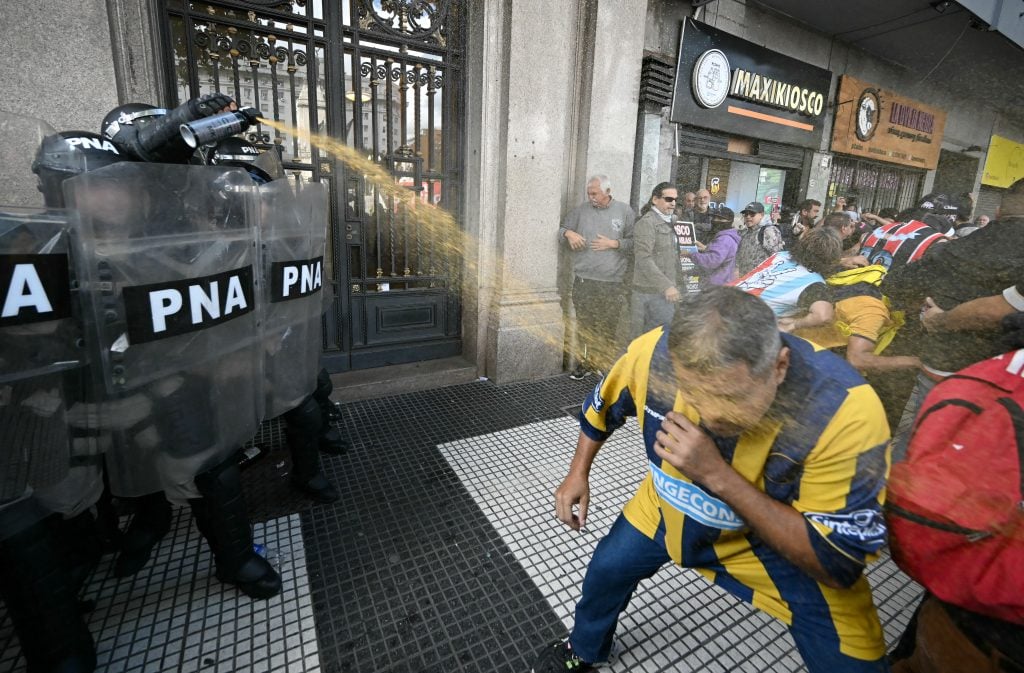On March 24, the Argentinian people took to the streets to celebrate the Day of Memory, Truth and Justice. The date marks the beginning of the military dictatorship that haunted the country from 1976 to 1983. It was a terror regime that left more than 30,000 dead and missing.
Every year since re-democratization and on the same date, millions of people have marched on the streets of the country for the memory of the victims and for justice for their families. This year, a key element was unity between various grassroots organizations and human rights defenders, something that hadn’t happened for a long time.
“There is a people here who remembers,” Argentinian federal deputy Victoria Montenegro told BdF. While marching through the streets of Buenos Aires, she spoke to us and said that Argentinians are willing “to defend the spaces, the court cases, the human rights organizations, the mothers, the grandmothers and the search for their grandchildren”.
Montenegro, who today chairs the Buenos Aires Human Rights Commission, is a victim of the dictatorship. When she was just fifteen days old, her parents were kidnapped by the regime and went missing. Her kidnapper was Colonel Herman Tetzlaff, who raised her as “Maria Sol”.
Victoria only recovered her true identity at the age of 24, with the help of search groups and human rights organizations such as the Grandmothers of Plaza de Mayo.
This year, however, had a clear target: the extreme right-wing government of Javier Milei. The ultra-liberal president who adopted a shock policy to the economy – which has already left millions of Argentinians unemployed and below the poverty line – is, above all, a denier.
During the presidential campaign, he became known for questioning the veracity of the number of victims of the regime, claiming that the figure of 30,000 was a lie. In addition, days before this year’s March 24 event on the streets, the government released a short film, a kind of “conspiracy documentary”, appealing to the “true” history of the dictatorship, once again questioning reality.
On the streets, the population rejected these stances. ‘Milei, you trash. You are the dictatorship’; ‘There were 30,000 [victims]; ‘It was a genocide’, were some of the main slogans BdF heard people scream in Buenos Aires.
“It’s a systematic strategy,” accused Victoria Montenegro. She and other protesters also drew parallels between the Milei government and the dictatorship from a repressive point of view, since the ultra-liberal president doesn’t hesitate to use shock troops against demonstrators demanding better living conditions. The most recent victims are pensioners, who are feeling the brunt of the government’s economic adjustments.

A country where more than half the population is poor, with a 1.7% drop in GDP, skyrocketing unemployment due to mass government layoffs, inflation controlled only by recession and repression of demand, a denialist president who dares to question the military state terrorism, while mortgaging the country with yet another IMF debt and being investigated for supporting an illegal cryptocurrency trading scheme.
This is Javier Milei’s Argentina. But on the streets, people promise to resist.
In his open letter to the military junta, written on March 24, 1977, the brave Argentinian journalist and guerrilla member Rodolfo Walsh denounced the regime’s neoliberal and surrenderist practices that impoverished the people and put the country into debt.
Rereading Walsh’s message to write this text, I am moved to realize the scandalous similarity with the current period Argentinians experience.
Walsh was assassinated by the dictatorship that same year, days after writing the document that best summed up the regime’s cruel spirit, but his words still resonate:
“These are the reflections that, on the first anniversary of your inauspicious government, I wanted to send to the members of this Board, without hope of being listened to, with the certainty of being persecuted, but faithful to the commitment I made a long time ago to bear witness in difficult times.”




